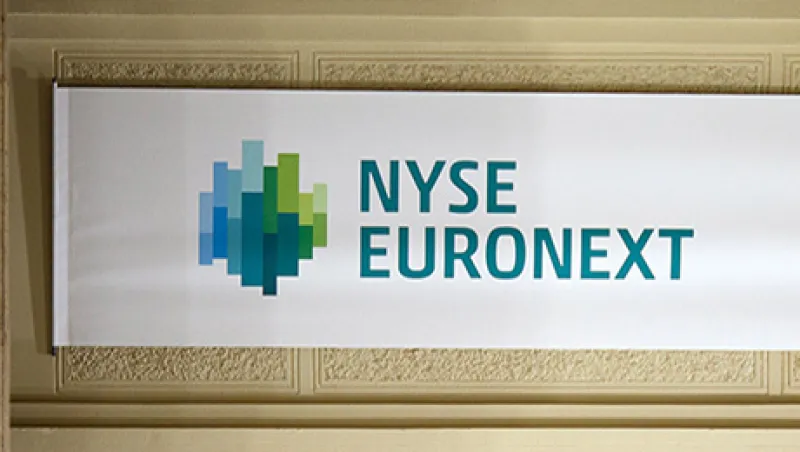Institutional investors are showing increasing interest in European equities. In many cases, however, an inherent wariness about the prospects for European economies — despite the European Central Bank’s much-anticipated plunge into quantitative easing last month — has prevented their interest from turning into outright enthusiasm. Arnaud Cosserat, CIO of Paris-headquartered investment management firm Comgest, describes the attitude as a case of what the French call “faute de mieux.” They are investing in Europe for want of anything better, and this rather lukewarm attitude is shaping the way they do it.
“Investors are worried about emerging markets, they are not attracted by the price of U.S. equities, and they don’t want to chase bond yields when they are very low,” says Cosserat. “But there is a good place to be, which is European equities. The growth is not fabulous, with earnings flat for the past three or four years, but it’s solid.”
Comgest’s European strategy has more than doubled, from €2.1 billion ($2.9 billion) in 2011 to €4.6 billion in September 2014. The fund got a big boost from high net inflows of €330 million in 2012 and €700 million in 2013, but those inflows dried up last year. The firm did see an uptick in inquiries about the fund in November and December, though, Cosserat says. The strategy is built around stocks with long-term structural advantages rather than using a cyclical approach. The centerpiece of the firm’s European strategy, the Comgest Growth Europe fund, is 86 percent active. The fund opts to invest in companies that have shown a clear trend toward structural growth, or, as Cosserat describes, “usually companies that invest heavily in their businesses to keep the ball rolling.”
Among the fund’s 30 holdings is Paris-headquartered ophthalmic lens manufacturer Essilor. With a 35 percent market share, it is by far the world’s biggest maker of corrective vision lenses. The company plows many of its profits back into research, allowing it to retain market share and build new markets through innovation. Its research budget is almost as large as the rest of the sector put together, says Cosserat. Essilor is gaining from two structural trends: the aging global population, which increases the likelihood of needing to wear lenses, and the rise of the middle class in emerging markets, which is increasingly able to afford them. The company has innovated in creating low-cost glasses and marketing them in countries such as China and India.
Roland Vetter, head of research at London-based utilities and infrastructure hedge fund firm CF Partners, agrees with the notion that banking on a European economic revival is not a one-way bet. His fund had invested in attractively valued European cyclical equities for much of the past year, including infrastructure construction companies, but has since switched over to companies with less exposure to the European economy. Enumerating the risks that could lead to weakness in European growth and a correction in stock markets, he cites the resurgence of populist parties in Europe, a lack of structural reform in several countries and uncertainty about Russia. CFP holds an investment in EDP Renováveis, a Lisbon-listed builder and operator of wind farms around the world — with a strong presence in the U.S. as well as in Europe. In addition to its global spread, the company sells most of its electricity output at guaranteed prices, which, he argues, are not affected by potential weakness in GDP growth.
Some investors are enthusiastic about investing in stocks precisely because of their exposure to the European economy’s business cycle, however. David Moss, head of European equities at F&C Asset Management in London, the European arm of Canada’s BMO Global Asset Management, tends to go for solid businesses, many of which happen to be in Europe. He adds, however, that “at the moment there is a case for buying businesses with particular exposure to Europe as well.” He suggests this largely because he believes that the European economy is picking up. Moss cites the past three European Central Bank quarterly lending surveys, which show increased appetite both among banks to lend and among households and businesses to borrow. He also notes that the ECB’s announcement in late January of at least €1.14 trillion in quantitative easing even further strengthens the case for buying businesses exposed to the European economy. At the same time, however, monetary policy has also helped exporters. “The ECB’s action is positive because of its effect on the currency and consumer, business and market confidence,” says Moss. “People are more confident because the scale of quantitative easing says that the ECB understands the magnitude of the issues involved.”
One stock that could benefit from a European economic recovery, he believes, is Amsterdam-listed AkzoNobel, which makes paints and other coatings. F&C has invested in AkzoNobel on behalf of several clients. Its decorative paint business, which includes the well-known Dulux brand, was hit badly by the fall in European consumer confidence. Having the house repainted is a consumer purchase that can be put off in hard times. Yet official figures for household consumption, up a respectable 0.6 percent in the third quarter of 2014, however, suggests that European consumers are at least starting to loosen their belts and will be able to spring for a fresh new coat of paint.
Get more on equities.






